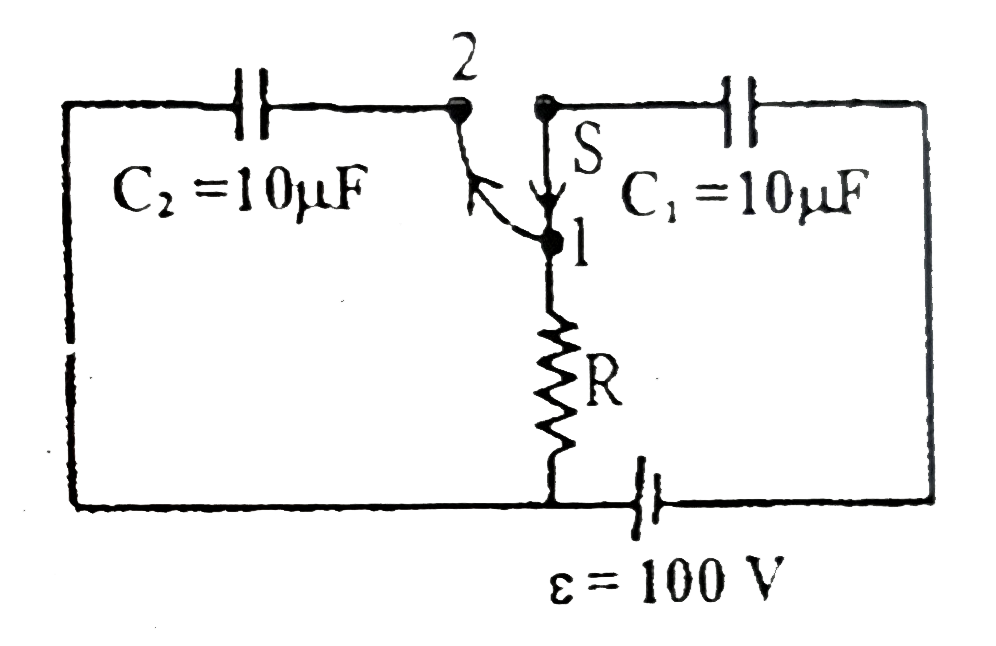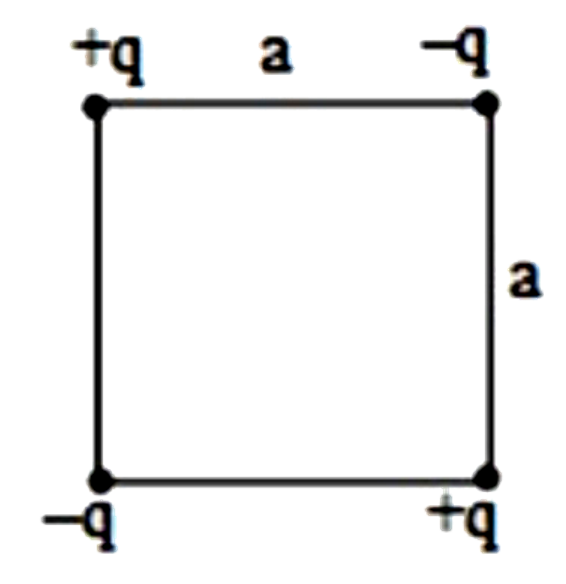How much work is required to carry a 6μC charge from the negative terminal to the positive terminal of a 9 V battery?
54×10−3J
54×10−6J
54×10−9J
54×10−12J
The correct Answer is:B
To find the work required to carry a charge from the negative terminal to the positive terminal of a battery, we can use the formula for work done in moving a charge in an electric field:
1. Identify the given values:
- Charge (Q) = 6 µC = 6×10−6 C
- Potential difference (V) = 9 V
2. Understand the relationship between work, charge, and potential difference:
The work done (W) in moving a charge in an electric field is given by the formula:
W=Q×V
where:
- W is the work done,
- Q is the charge,
- V is the potential difference.
3. Substitute the values into the formula:
W=(6×10−6C)×(9V)
4. Calculate the work done:
W=54×10−6J
or
W=54μJ
5. Final answer:
The work required to carry a 6 µC charge from the negative terminal to the positive terminal of a 9 V battery is 54μJ.
- Charge (Q) = 6 µC = 6×10−6 C
- Potential difference (V) = 9 V
The work done (W) in moving a charge in an electric field is given by the formula:
W=Q×V
where:
- W is the work done,
- Q is the charge,
- V is the potential difference.
W=(6×10−6C)×(9V)
W=54×10−6J
or
W=54μJ
The work required to carry a 6 µC charge from the negative terminal to the positive terminal of a 9 V battery is 54μJ.
Topper's Solved these Questions
- CURRENT ELECTRICITYBOOK - DC PANDEY ENGLISHCHAPTER - CURRENT ELECTRICITYEXERCISE - Taking it together
142 Videos
- CURRENT ELECTRICITYBOOK - DC PANDEY ENGLISHCHAPTER - CURRENT ELECTRICITYEXERCISE - B. Assertion and reason
18 Videos
- CURRENT ELECTRICITYBOOK - DC PANDEY ENGLISHCHAPTER - CURRENT ELECTRICITYEXERCISE - Example
65 Videos
- COMMUNICATION SYSTEMBOOK - DC PANDEY ENGLISHCHAPTER - COMMUNICATION SYSTEMEXERCISE - Subjective
11 Videos
- ELECTROMAGNETIC INDUCTIONBOOK - DC PANDEY ENGLISHCHAPTER - ELECTROMAGNETIC INDUCTIONEXERCISE - Medical entrances gallery
25 Videos
Similar Questions
Knowledge Check
The electrode connected to positive terminal of the battery is called _____
ACathodeBAnodeCElectrodeDNone of these
The potential difference across the terminals of a battery is 10 V when there is a current of 3 A in the battery from the negative to the positive terminal. When the current is 2A in the reverse direction, the potential difference becomes 15 V. The internal resistance of the battery is
View Solution................. is connected to the negative terminal of battery.
View SolutionThe potential difference across the terminals of a battery is 8.4V when there is a current of 1.50A in the battery from the negative to the positive terminal. When the current is 3.50Air, the reverse direction, the potential difference becomes 9.4V.
(a) What is the internal resistance of the battery?
(b) What is the emf of the battery?
View SolutionA parallel-plate capacitor has plates of unequal area . The larger plates is connected to the positive terminal of the battery and the smaller plate to its nagative terminal. Let Q+ and Q-be the charges appearing on the positive and negative plates respectively
View Solution
Assertion:In the part of a circuit shown in figure, given that Vb>Va. The current should flow from b to a.
Reason: Direction of current inside a battry is always from negative terminal to positive terminal.
View SolutionA capacitor of capacitance C is charged to a potential difference V0 and then connected with a resistance and a battery of EMF 3V0 such that the positively charged plate of the capacitor is connected to the positive terminal of the battery. The total heat generated in the resistance until the current in the circuit becomes zero is n(CV20). the value of n is ________.
View SolutionTwo identical capacitors are connected in the circuit shown. C2 is charged to 100V and switch S is shifted from position 1 to position 2. The negative terminal of C2 is connected with the positive terminal of C1. Find the work done by the battery. If the polarity of C2 were reversed, what work would have been done by the battery ?

View Solution

